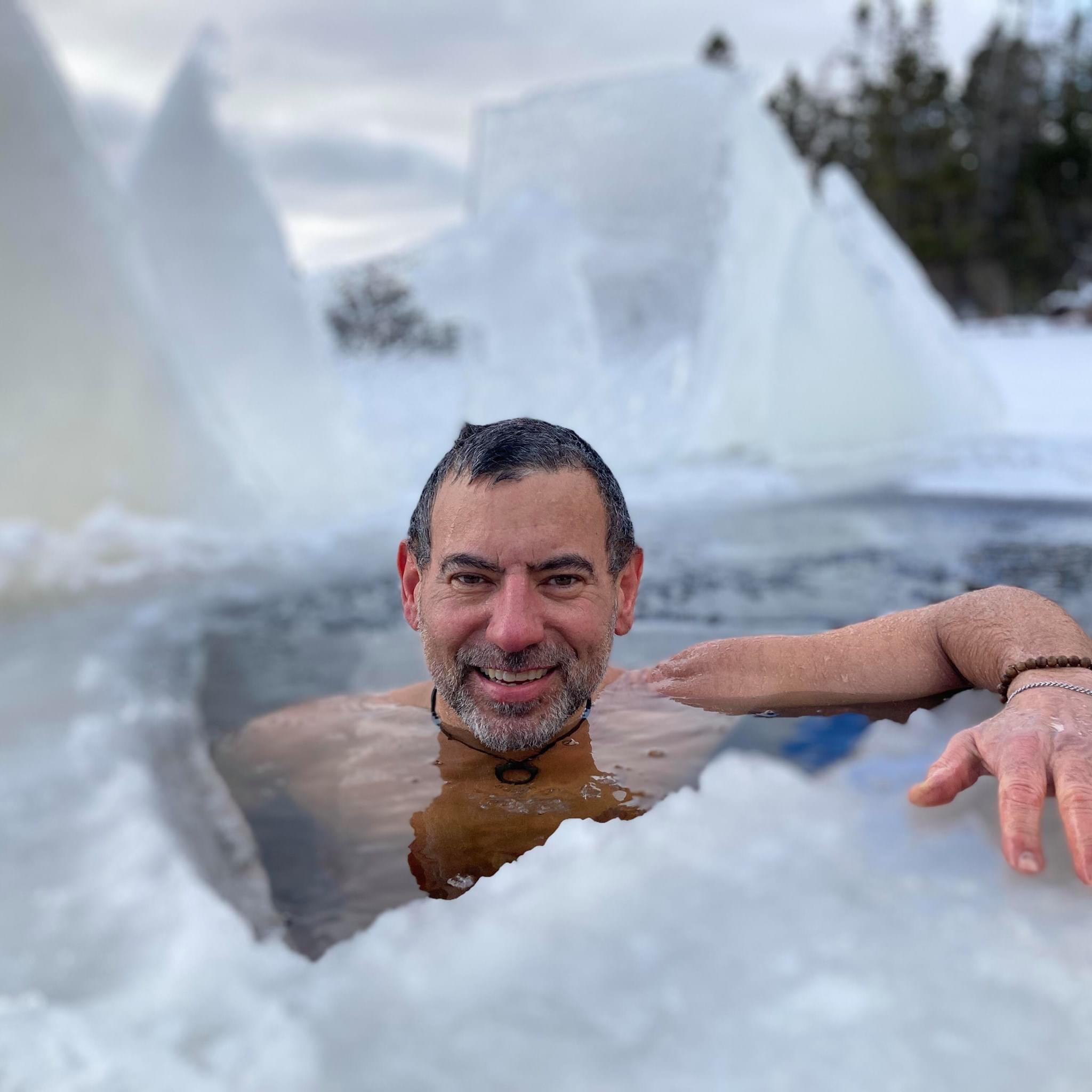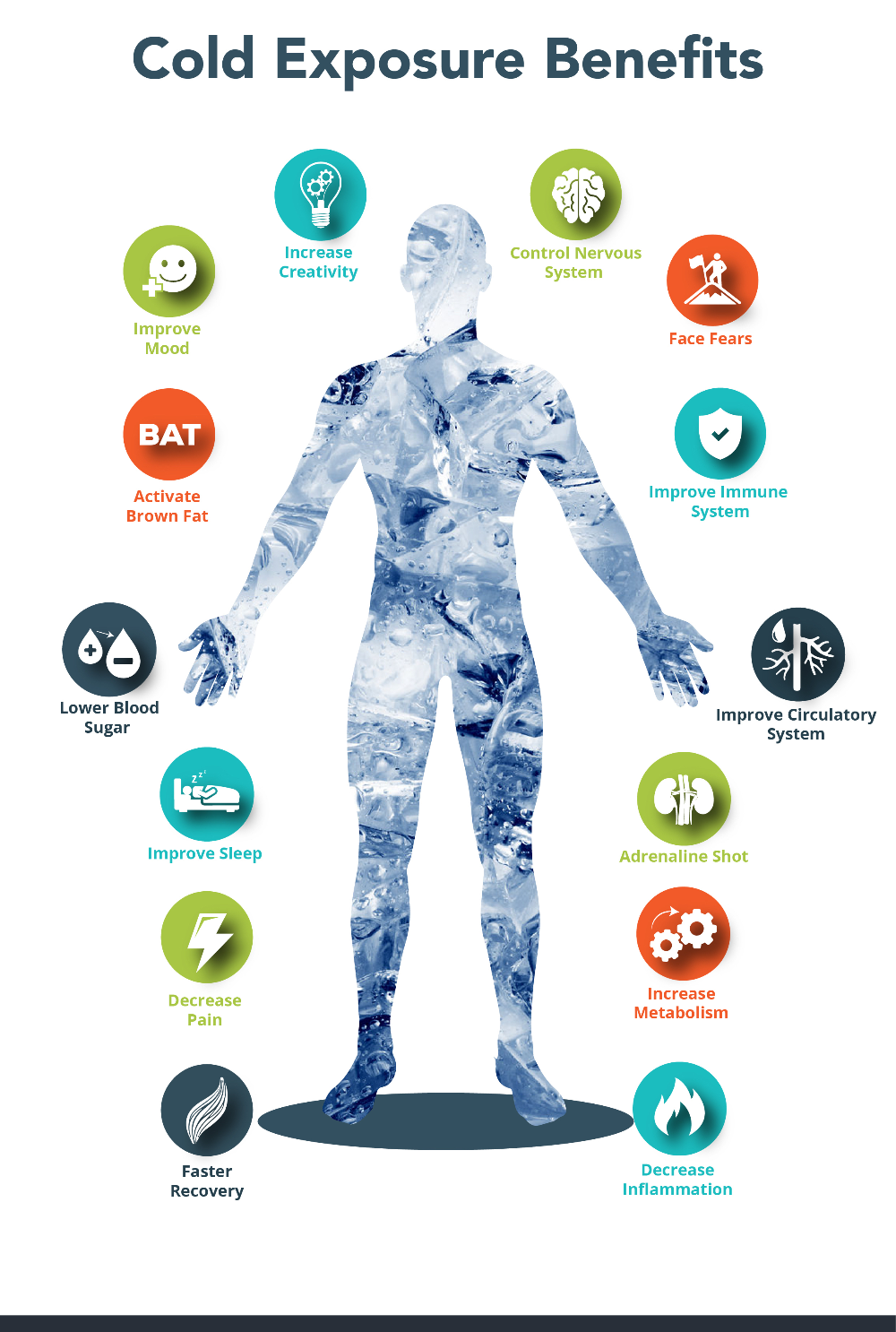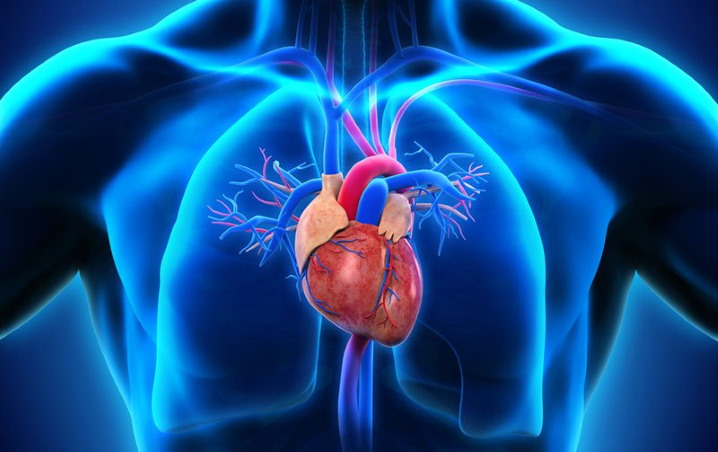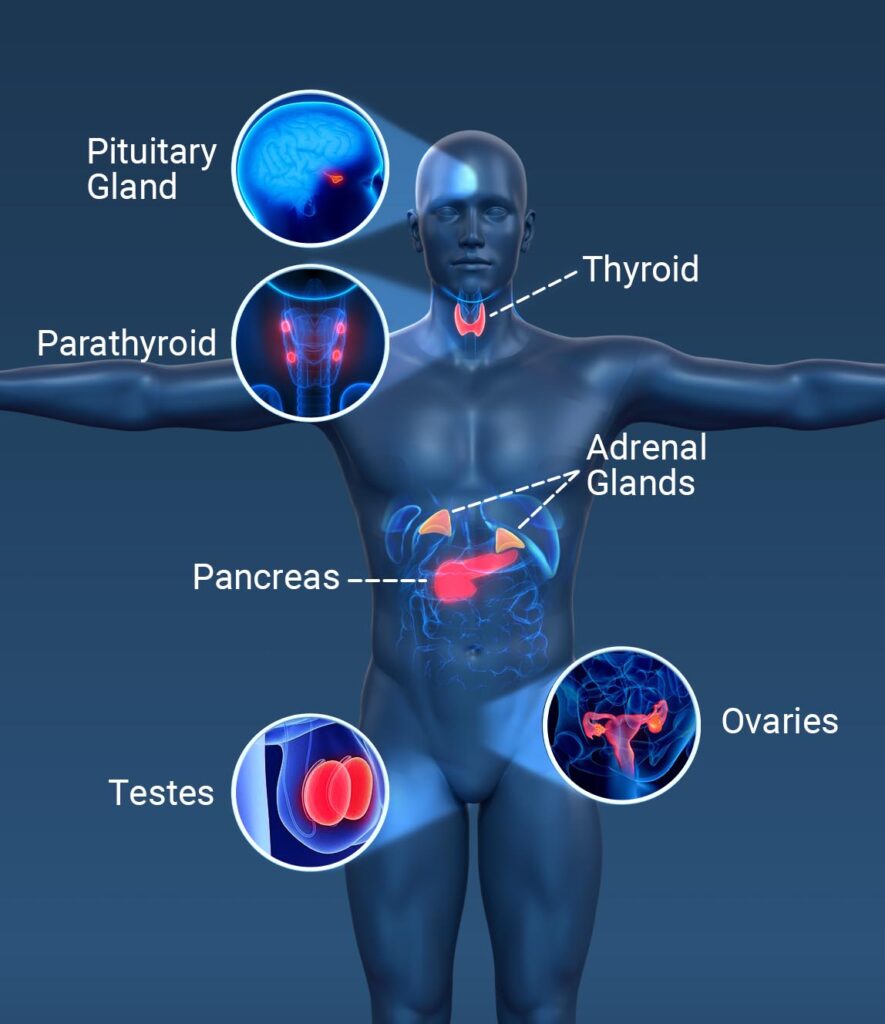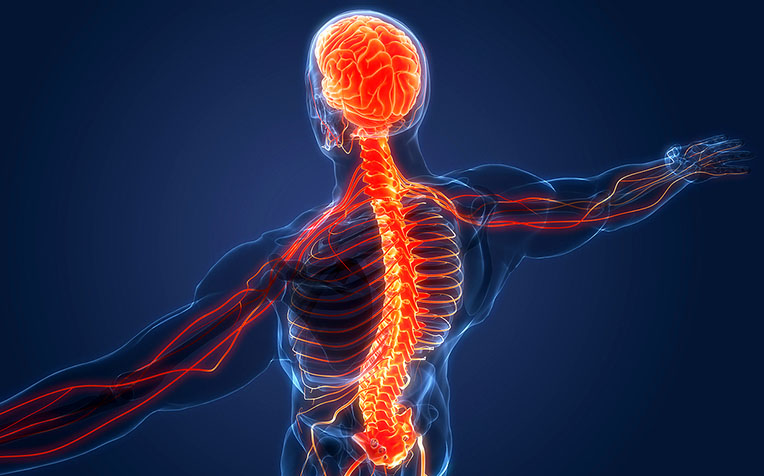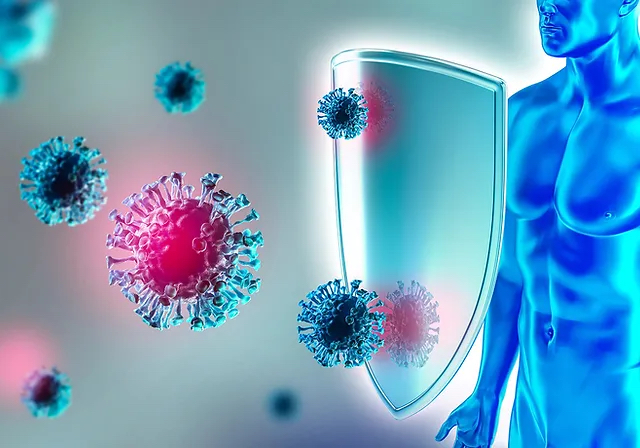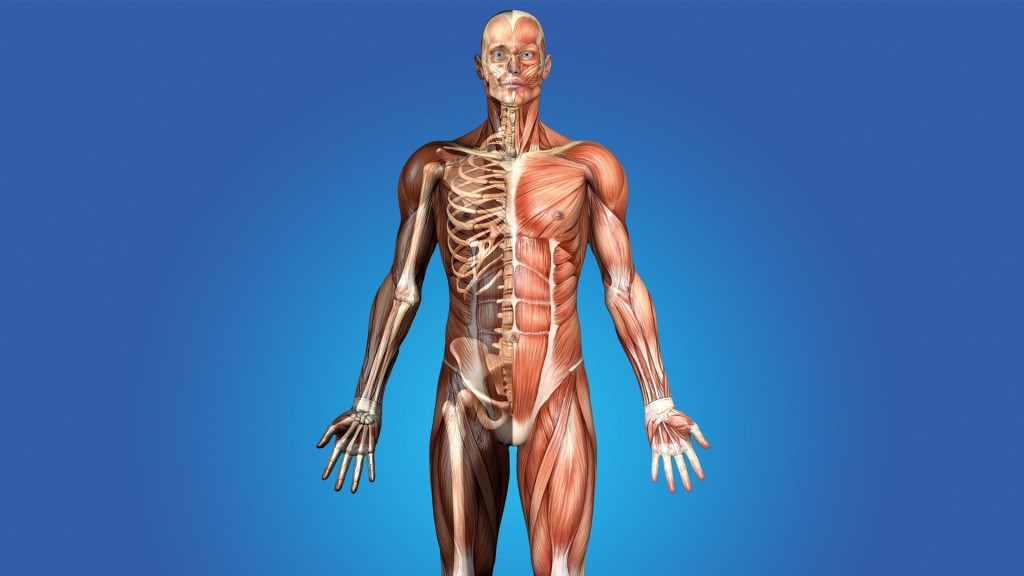INTRODUCTION
Cold water immersion (fancy way of describing being in cold friggin’ water) is a form of bathing that has gained popularity in recent years, thanks to researchers and popular public figures (i.e., Dr. Andrew Huberman, Wim Hof, Brent Beshara). Cold water immersion (CWI) can be defined by exposing the body to water temperatures with a wide range from -2°C to 9°C (via showers or total immersion in water) according to Esperland et al1 while a meta-analysis by Moore et al9 suggested optimal CWI at temperatures between 11°C to 15°C.
Mounting evidence is suggesting that CWI has beneficial impacts on multiple organ systems (FYI organ systems are: Bodyfat/Skin, Cardiovascular/Circulatory, Digestive, Hormones/Endocrine, Immune/Lymphatic, Muscular, Neurological, Reproductive, Urinary, Respiratory, Skeletal).1(6)
*Remember; your health is a product of all of these organ systems working well, and working well together* Below are some of the proposed health benefits of CWI:
1. Cardiovascular/Circulatory:
- Esperland et al1(6) noted that cold adapted groups tended to have a significant reduction in apolipoprotein B/apolipoprotein A ratios… apolipoprotein B (a protein bonded to various LDL particles) is commonly regarded by the public as “bad” cholesterol while apolipoprotein A (a protein bonded to HDL particles) is considered “good” (an oversimplification, admittedly). Furthermore, plasma homocysteine (high levels can damage arteries and increase presence of clots) were lowered in addition to lowered oxidative stress (this process can damage cells and organs) markers.1(6),2 Please read more about cardiovascular disease and oxidative stress below:
LINK: Cardiovascular Heart Disease: Exploring Blood Panels and Nutritional Interventions
LINK: Antioxidants and Tracking Oxidative Stress
LINK: Cardiovascular Disease: Understanding Blood Panels and Nutritional Interventions
2. Endocrine/Hormones:
- CWI also appears to lower plasma adrenocorticotropic hormone (ACTH).1(9) Why is this important? ACTH stimulates the adrenal glands (they sit on top of your kidneys) to produce and secrete cortisol.3 Too much secretion of ACTH from your anterior pituitary gland (in your brain) can produce excessive amounts of cortisol (commonly known as the stress hormone). Chronically high levels of cortisol are generally considered a marker of stress, and over 70% of diseases are thought to be associated with stress.4 Chronic overproduction of cortisol can induce muscle loss, depression, fatigue, cognitive dysfunction, electrolyte dysregulation, and pain.5 So, CWI may help reduce cortisol and the negative effects associated with this hormone.
- CWI also increases another hormone known as norepinephrine.1(9) Norepinephrine, along with serotonin, are considered principal mediators of pain pathways…in English, they help reduce your sensation of pain.6 Interestingly, even after 3 months of CWI, norepinephrine continued to release at significant concentrations, suggesting epinephrine did not become less responsive to CWI over time.1(9) It is possible, then, that CWI could be helpful in managing acute and chronic pain.
3. Neurological/Psychological:
- Some studies cited by Esperland et al1(10) have suggested that CWI stimulates the production of cold shock proteins to include RNA binding protein, otherwise known as RBM3. Why is this important you might ask? RMB3 is involved in the regeneration of synapses (parts of your nerves, such as those in your brain).1(10) Overproduction of RBM3 in Alzheimer’s mutated mice studies demonstrated protection of the synapses. It is possible that CWI in humans with neurodegenerative disease may help manage such conditions via increased levels of RBM3.
- CWI also appears to improve alertness, activity, and attentiveness as well as reducing fatigue and depressive symptoms.7 This might be due to the release of neurotransmitters like serotonin (involved in mood stabilization, long lasting feelings of happiness) dopamine (involved in pleasure and motivation), norepinephrine (see previous sections), and beta-endorphin (controls pain and involved in reward/motivation behaviors) during CWI.7,8
4. Immune:
- CWI also helps manage inflammation and support immune function by increasing levels of interleukin-6 (a small protein which controls inflammation), T-helper lymphocytes (immune cells that activate all other immune cells including CD4+ cells), CD4+ lymphocytes (an immune cell which activates antibodies and other immune cells that attack pathogens), CD8+ cells (immune cells which attack pathogens, infected cells, and cancer cells), activation of T-lymphocytes (“turning on” CD4+ and CD8+ immune cells mentioned above), and activation of B lymphocytes (“turning on” immune cells which make antibodies; antibodies “handcuff” pathogens so they can’t enter cells, and they also tag the pathogen for destruction from other immune cells that “eat and digest” them).1(9)
5. Muscular:
- Moore et al9 indicated that CWI induced positive effects on recovery from high intensity exercise (i.e., strength training). Specifically, the researchers found that delayed onset of muscle soreness (DOMS) and individuals’ perceptions of recovery were both improved from CWI.9(1685) The degree of muscle damage from resistance training and high intensity running is measured by the level of creatine kinase (often released from muscles when they are worked hard); CWI helped reduce these levels.9(1684) Huberman10 did make a helpful and insightful note regarding when an individual might perform CWI to manage DOMS from strength training; CWI used too closely to strength training could likely hinder the beneficial adaptations (CWI could inhibit strength/muscle growth). Practically speaking, it might be more optimal to perform CWI between resistance training days.10
VERY NERDY EXPLANATIONS….HOW LONG DO I STAY IN THE WATER?
The meta-analysis by Moore et al9(1668) identified an optimal time between 11-15 minutes in duration at temperatures ranging between 11°C to 15°C. However, Huberman10 noted that these times were a total for the week, and you can certainly break this time over multiple days through a 7-day period. This helps make CWI a little more practical and is a much better way of introducing it to people.
WHAT TIME OF DAY IS BEST?
As noted in earlier sections, CWI can spike alertness and energy levels. Therefore, it might be best to do CWI earlier in the day and not too close to bedtime. Since the body tends to lower its temperature as bedtime gets closer, CWI would drive body temperature up after completion (i.e., shivering).10 Speaking of optimal sleep quality and duration (you better believe it is good for your health and recovery) check out the links below:
LINK: Improving Sleep Quality and Duration
LINK: Sleep and Nutrition: Optimizing Immune System Health
LINK: Sleep Disorders and Weighted Blankets: Can They Help?
LINK: Improving Sleep Quality and Duration with CBD/THC Oil
LINK: Inadequate Sleep and Health Outcomes
LINK: Poor Sleep and Insulin Resistance
CONCLUSIONS
There you have it; CWI can be a simple and cost-effective way of supporting optimal functioning of several organ systems; you just have to sit there and breathe, and your body will take care of the rest.
References
1. Esperland D, De Weerd L, Mercer JB. Health effects of voluntary exposure to cold water – A continuing subject of debate.Int J Circumpolar Health. 2022;81(1):1-15. doi:10.1080/22423982.2022.2111789.
2. Kumar A, Palfrey HA, Pathak R, et al. The metabolism and significance of homocysteine in nutrition and health.Nutr Metab (Lond). 2017;14(78):1-12. doi:10.1186/s12986-017-0233-z.
3. Xing Y, Parker CR, Edwards M, et al. ACTH is a potent regulator of gene expression in human adrenal cells.J Mol Endocrinol. 2010;45(1):59-68. doi:10.1677/JME-10-0006.
4. Lee DY, Kim E, Choi MH. Technical and clinical aspects of cortisol as a biochemical marker of chronic stress.BMB Rep. 2015;48(4):209-216. doi:10.5483/bmbrep.2015.48.4.275.
5. Hannibal KE, Bishop MD. Chronic stress, cortisol dysfunction, and pain: a psychoneuroendocrine rationale for stress management in pain rehabilitation.Phys Ther. 2014;94(12):1816-1825. doi:10.2522/ptj.20130597.
6. Marks DM, Shah MJ, Patkar AA, et al. Serotonin-norepinephrine reuptake inhibitors for pain control: premise and promise.Curr Neuropharmacol. 2009;7(4):331-336. doi:10.2174/157015909790031201.
7. Yankouskaya A, Williamson R, Stacey C, et al. Short-term head-out whole-body cold-water immersion facilitates positive affect and increases interaction between large-scale brain networks.Biology (Basel). 2023;12(2):211. doi:10.3390/biology12020211.
8. Pilozzi A, Carro C, Huang X. Roles of β-endorphin in stress, behavior, neuroinflammation, and brain energy metabolism.Int J Mol Sci. 2020;22(1):338. doi:10.3390/ijms22010338.
9. Moore, E., Fuller, J.T., Buckley, J.D.et al.Impact of cold-water immersion compared with passive recovery following a single bout of strenuous exercise on athletic performance in physically active participants: A systematic review with meta-analysis and meta-regression. Sports Med. 2022;52:1667–1688. doi:https://doi.org/10.1007/s40279-022-01644-9.
10. Huberman A. The Science & Use of Cold Exposure for Health & Performance. Huberman Lab website.https://hubermanlab.com/the-science-and-use-of-cold-exposure-for-health-and-performance/. Accessed August 6, 2023.
-Michael McIsaac

